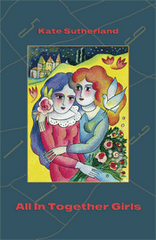
I’m gearing up for my trip to Edinburgh next week by rereading Edinburgh: Picturesque Notes, my favourite Robert Louis Stevenson book. Here are a few snippets from the first couple of chapters.
On Edinburgh’s climate:
The weather is raw and boisterous in winter, shifty and ungenial in summer, and a downright meteorological purgatory in the spring.
On its contrasts:
Few places, if any, offer a more barbaric display of contrasts to the eye. In the very midst stands one of the most satisfactory crags in nature—a Bass Rock upon dry land, rooted in a garden, shaken by passing trains, carrying a crown of battlements and turrets, and describing its war-like shadow over the liveliest and brightest thoroughfare of the new town. From their smoky beehives, ten stories high, the unwashed look down upon the open squares and gardens of the wealthy; and gay people sunning themselves along Princes Street, with its mile of commercial palaces all beflagged upon some great occasion, see, across a gardened valley set with statutes, where the washings of the old town flutter in the breeze at its high windows.
On the fall of the land in the High Street:
The building had grown rotten to the core; the entry underneath had suddenly closed up so that the scavenger’s barrow could not pass; cracks and reverberations sounded through the house at night; the inhabitants of the huge old human bee-hive discussed their peril when they encountered on the stair: some had even left their dwellings in a panic of fear, and returned to them again in a fit of economy or self-respect; when, in the black hours of a Sunday morning, the whole structure ran together with a hideous uproar and tumbled storey upon storey to the ground. The physical shock was felt far and near; and the moral shock travelled with the morning milkmaid into all the suburbs. The church-bells never sounded more dismally over Edinburgh than that grey forenoon. Death had made a brave harvest; and, like Samson, by pulling down one roof destroyed many a home. None who saw it can have forgotten the aspect of the gable: here it was plastered, there papered, according to the rooms; here the kettle still stood on the hob, high overhead; and there a cheap picture of the Queen was pasted over the chimney. So, by this disaster, you had a glimpse into the life of thirty families, all suddenly cut off from the revolving years. The land had fallen; and with the land how much! Far in the country, people saw a gap in the city ranks, and the sun looked through between the chimneys in an unwonted place. And all over the world, in London, in Canada, in New Zealand, fancy what a multitude of people could exclaim with truth: ‘The house that I was born in fell last night!’
Much has changed since Stevenson‘s book was first published in 1879, but Edinburgh still has the vile climate, the dramatic contrasts, and the spooky charm born of a dark history.

1 comment:
Have a GREAT trip!
Post a Comment